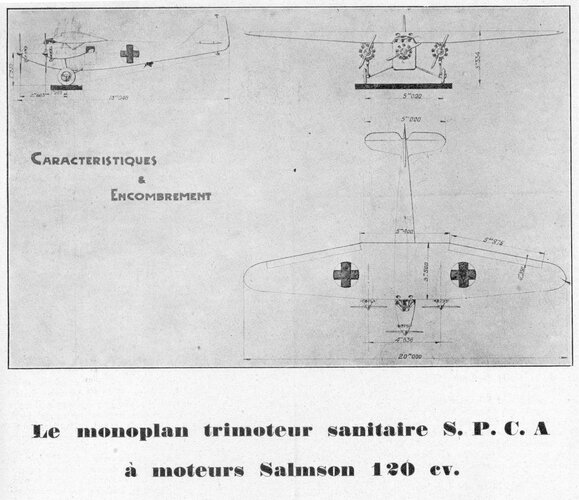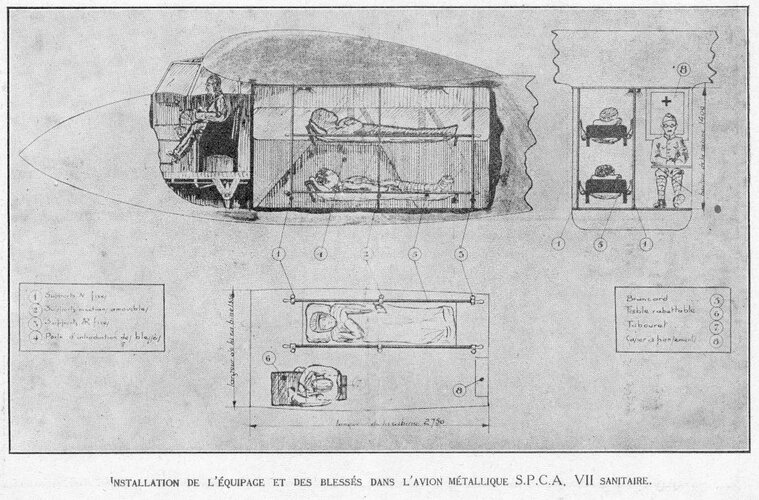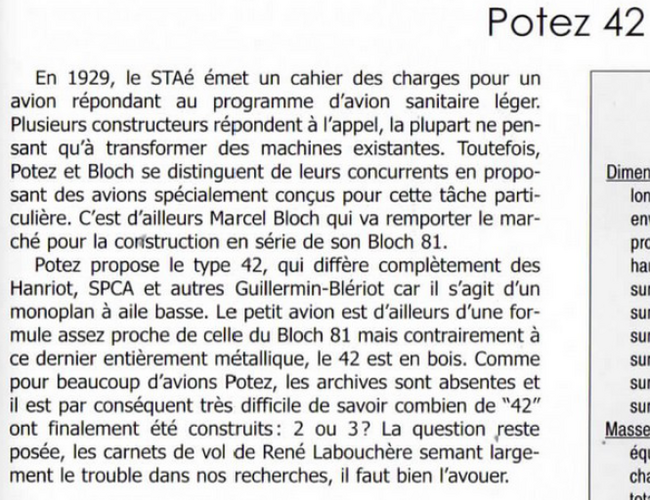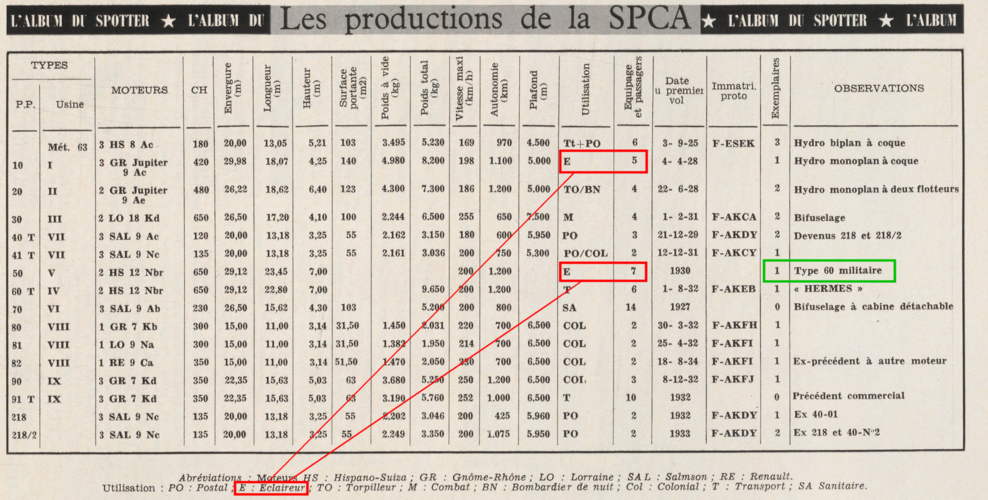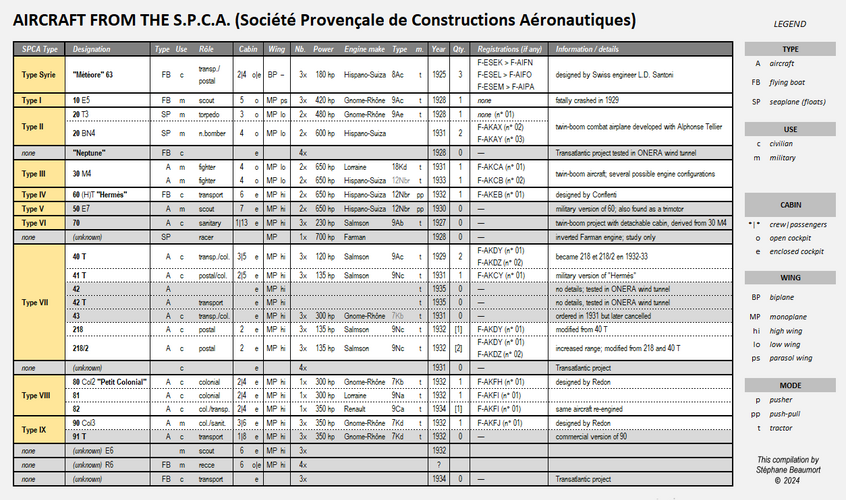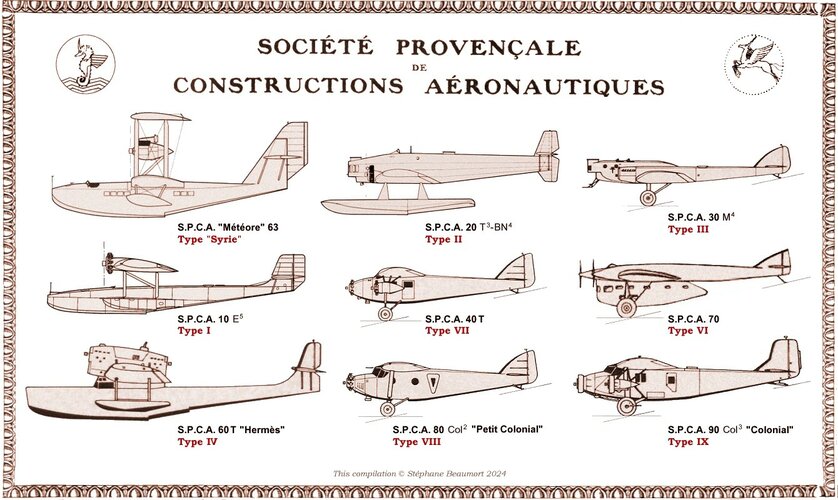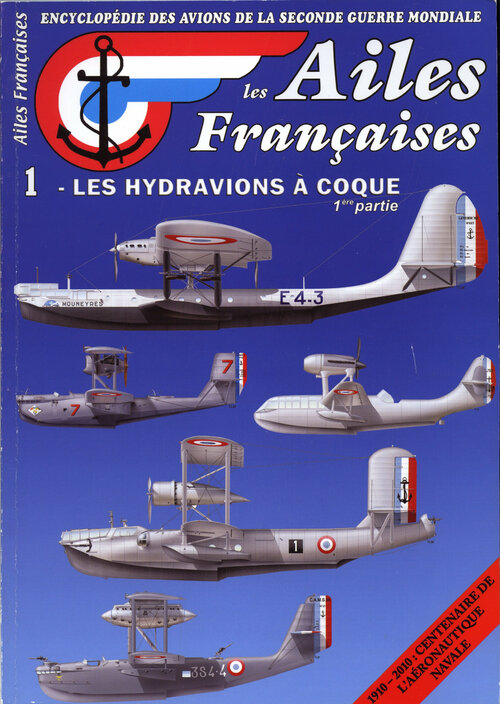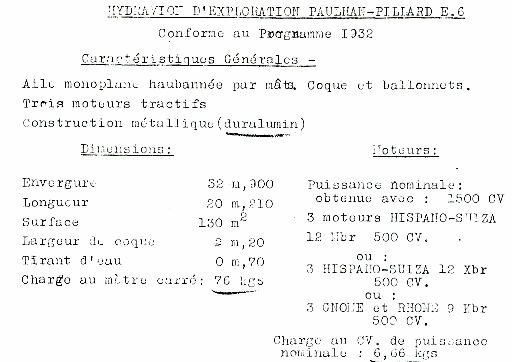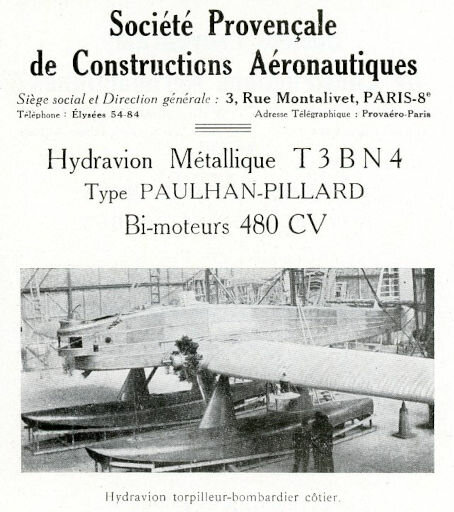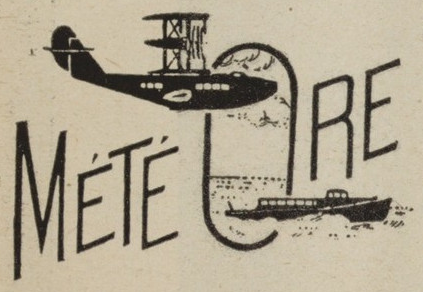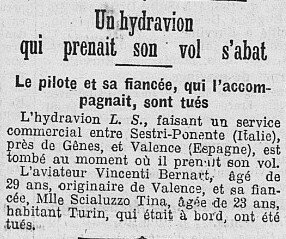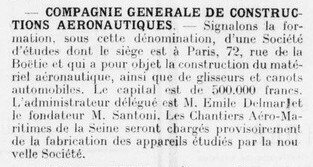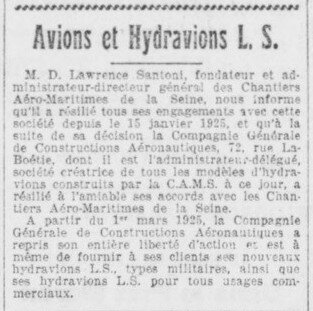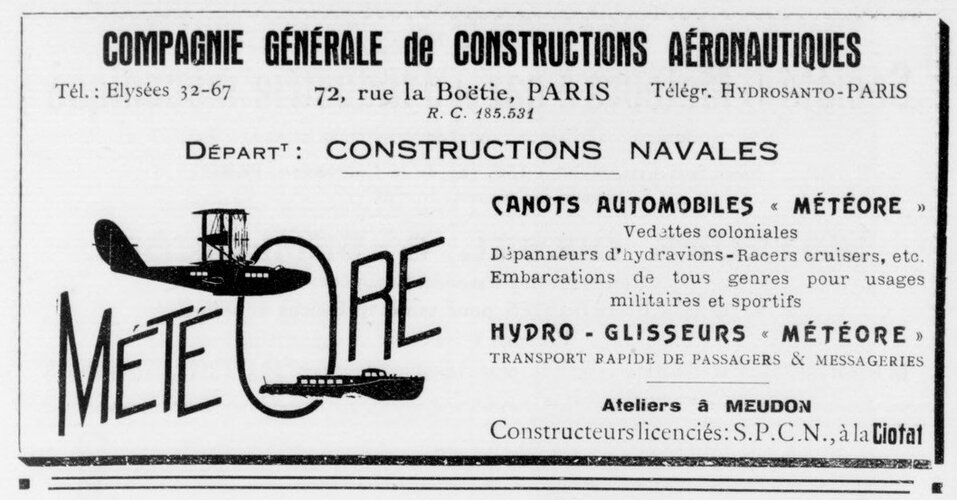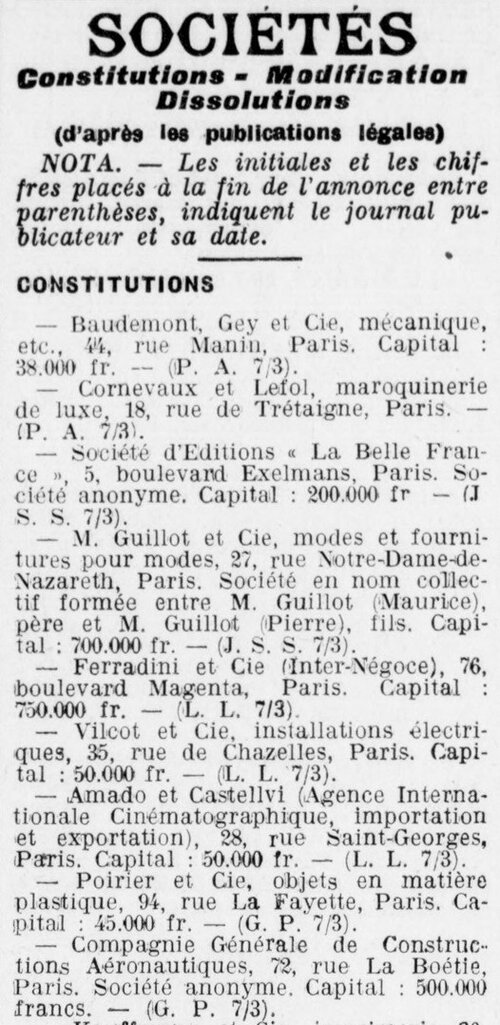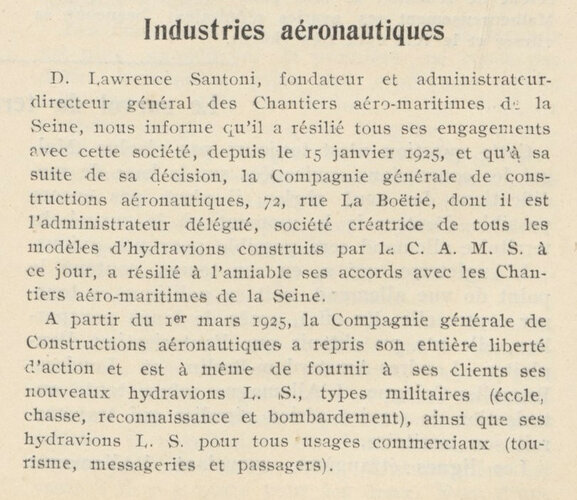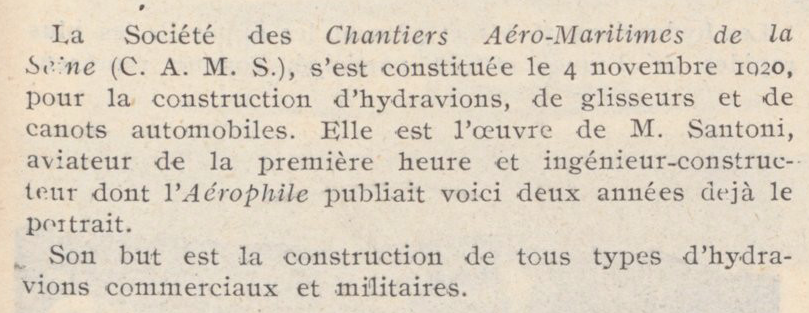Again, there is a lot of confusion about SPCA practices. French manufacturers don't always follow the same rules, sometimes they use multiple rules at the same period, and sometimes they simply don't apply any rule in their own designation system. So please, do not try to deduce designation just based on any "logic", this will invariably generate false information and fantasy.
During the period 1910-1920, most of French seaplane manufacturers did not assign any name or number to their production, but just distinguished their models by the manufacturer and power of their engines (FBA Le Rhône 80 cv, Tellier 200 cv,...).
After, some of them presented their production by the category for which it had been designed. This is the case of SPCA, even they used internally other designations (SPCA I, II, III, IV, V, VII, VII, VIII, IX, as well as PP 10, 20, 30, 60, etc.). Please note that THIS IS NOT A DESIGNATION, it is just a way to present their project and production to various public. I attach some examples of SPCA original documents: an advertisement presenting the well-known SPCA 20 just by the categories it was able to comply (T3 and BN4), and another example of official presentation to CEPANA (examination commitee) of a SPCA proposal in category E6.
Again, the internal SPCA designation for this E6-category seaplane is UNKNOWN. We don't even know if it was given a designation or not. But "E6" is not its designation, it's just its classification for submission to examination by the commission.
The fact that SPCA proposed their design for multiple "closed" categories, such as E5, E6 and E7 is not surprising. We know a lot of other such examples from other manufacturers, even sometimes proposing the same aircraft in multiple categories: Breguet 482 B4/B5, Breguet 693 B2/AB2, Bloch 170 AB2/A3, MB.210 BN4/BN5, Amiot 340-350 BR3/B4/A4 etc.
Please also note that this is a primary material, not just something written in a magazine or a book, regardless of the seriousness of the author.

